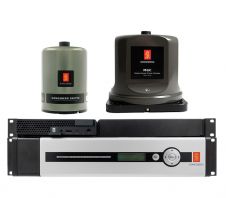A Top-down Approach
Many international organisations and individuals have been aware of the dire need for the improvement of navigational services to shipping in many parts of the developing world. The lack of these services is a vicious circle.
On the surface it appears to many coastal States that the provision of maritime safety information in its various forms is a luxury that a State burdened with poverty, famine, drought and ill health can not afford. The long-term approach being however that improvement in the provision of maritime safety information leads to greater and more lucrative trade, tourism and other benefits which will eventually lead to an overall improvement in the standard of living in the coastal State.
Many of the earlier initiatives were introduced by the IMO, the IHO and IALA who also support the World Bank- Global Environment Facility’s Western Indian Ocean Marine Highway Development and Coastal and Marine Contamination Protection (WIO/MHD/CMPP) Project. This is a major complimentary top-down approach that could support the other projects and could lead to the overall improvement of maritime safety in the region.
The project should be able to include Comoros, Kenya, Madagascar, Mauritius, Mozambique, Seychelles South Africa and Tanzania and as a partner La Réunion (France), covering a combined coastline of 13,300 kilometers. The project is similar to the model developed for the Straits of Malacca and Singapore but it is, of necessity different in concept. It will be implemented in phases. The first phase will be a demonstration phase with a marine highway for the major shipping routes.
The project will support a network of (ENCs), which will form the backbone of a marine highway extending from South Africa past the Mozambican port of Nacala and then past Aldabra Island. Vessels will voluntarily use the highway. The area between the end points is in deep water and is relatively far from the coasts. ENCs will however be produced for these areas to ensure continuity.
There are three specific objectives. The first to ascertain the economic, technical, and institutional feasibility of introducing precision navigation systems. The second is to support the widening of existing regional agreements on port state control. The third, for three States in the region, is to reduce risks of environmental damage to beaches, fishing grounds, and other domestic resources from spills of oil and chemicals.
Over 5,000 tanker voyages per year take place and pass close to environmentally sensitive areas such as the World Heritage site of Aldabra Atoll. Oil and gas exploration programs add to the risks. A large oil spill could also severely harm the economies of coastal States by damaging fishing grounds, beaches, and diving and deep-sea fishing areas; disrupting shipping; and shutting down activities that depend on seawater intake.
The hydrographic component will include:
- production of nautical charts and publications
- maintenance of these charts and publications
- survey and rehabilitation of the main aids to navigation in the region; including automatic information service (AIS) at certain points enroute
- support search and rescue activities
- the evaluation of the demonstration phase and preparation of the second phase.
Shore-based authorities could identify and track ships passing through their waters. The project is a valuable tool for ensuring safe navigation and preventing and controlling marine pollution. It is hoped that the project will commence early in 2006.

Value staying current with hydrography?
Stay on the map with our expertly curated newsletters.
We provide educational insights, industry updates, and inspiring stories from the world of hydrography to help you learn, grow, and navigate your field with confidence. Don't miss out - subscribe today and ensure you're always informed, educated, and inspired by the latest in hydrographic technology and research.
Choose your newsletter(s)
























